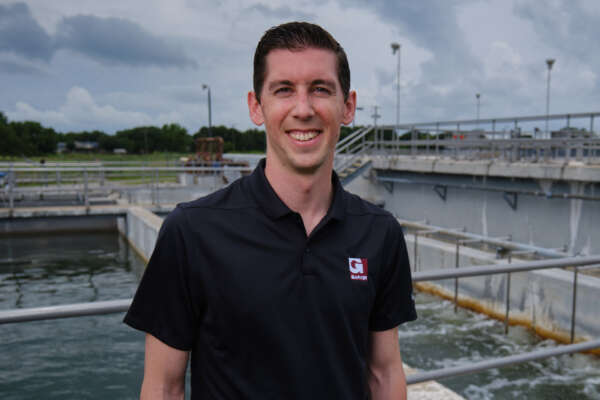The importance of secondary disinfection in distribution systems

Garver Distribution System Water Quality Practice Leader Ashley Pifer, Ph.D., PE, recently authored an article published in the Journal – American Water Works Association that discussed the importance of secondary disinfection and how it has influenced utilities and regulations.
In this IQ&A, Garver’s series of conversations with leading experts delivering value to communities across the country, Pifer answers the most pressing questions concerning secondary disinfection.
Why do distribution systems need to maintain a disinfectant concentration?
Disinfectant residuals serve multiple purposes in drinking water distribution systems. They help to curb growth of microorganisms and can also be used as an indicator of water quality within the distribution system. Disinfectants react with substances within the water and on distribution materials, including microorganisms, over time. That being the case, gradual decreases in disinfectant residuals can tell us where water is oldest and of lower quality, while sudden decreases can alert us to contamination events.
What would happen to distribution systems if there was no form of secondary disinfection?
The answer to this question depends on the distribution system and the water entering it. Many distribution systems in the United States have aging infrastructure that is at increased risk for leaks and contamination or may have corrosion products that harbor microorganisms. The water entering many distribution systems contains organic carbon and nutrients that serve as food for microorganisms. That being the case, without a disinfectant residual, microbial activity would likely increase, possibly increasing the regrowth of pathogens. In addition, we would lose a tool for monitoring water quality in our distribution systems, potentially allowing problems to go unnoticed and unaddressed.
How do utilities address the drawbacks to secondary disinfection?
Major drawbacks to secondary disinfection are the formation of regulated disinfection byproducts (DBPs) in systems that use free chlorine and nitrification in systems that use chloramines. DBPs form over time from reactions between disinfectants and natural organic matter. Nitrification is a biological process that converts free ammonia, usually from the breakdown of chloramines, to nitrite and nitrate. DBPs and nitrification are typically problematic when water age is high. To counter this, utilities flush distribution system pipes and operate water storage tanks in a way that minimizes water age and mitigates the formation of “dead zones,” where water becomes stagnant.
How have secondary disinfection practices influenced regulations on water quality?
Secondary disinfection practices and regulations have influenced each other. The Surface Water Treatment Rule (SWTR) requires water systems to maintain a “detectable” disinfectant residual, rather than a numeric residual standard. Free chlorine has been used to provide that residual for many years.
However, when DBPs were linked to drinking water disinfection in the 1970s, secondary disinfection practices began to change. Regulations, such as the Stage 1 and 2 Disinfectants/DBP (D/DBP) Rules, have prompted many water utilities to either curb free chlorine usage or switch to chloramines, which form fewer regulated DBPs.
Some states have implemented numeric standards for disinfectant residuals to increase protection against pathogens. Others require water systems that use chloramines to implement nitrification monitoring and control plans to maintain water quality and prevent residual loss. Currently, the EPA is considering revisions to the SWTR and D/DBP Rules, such as implementation of numeric residual standards, which may impact secondary disinfection practices in the next few years.
To learn more about secondary disinfection, contact Ashley below.









Share this article